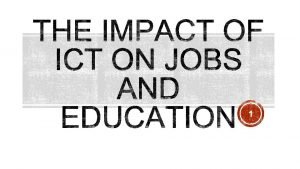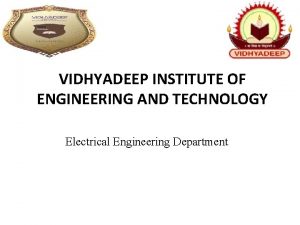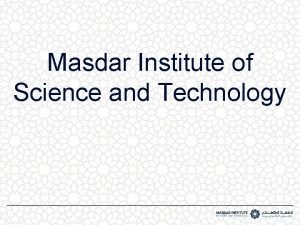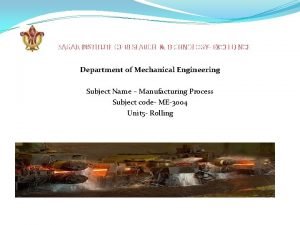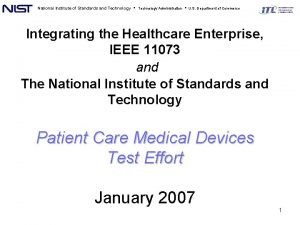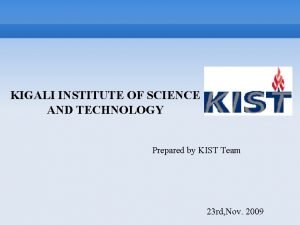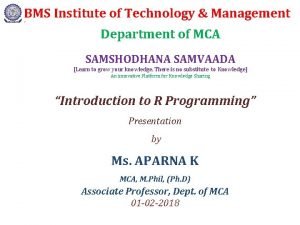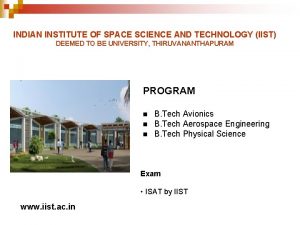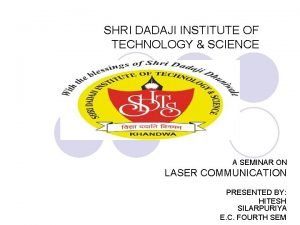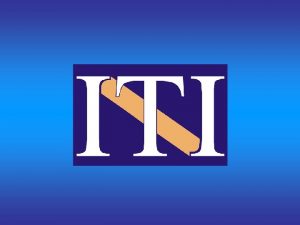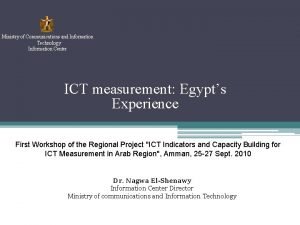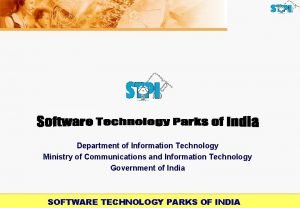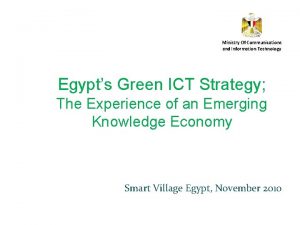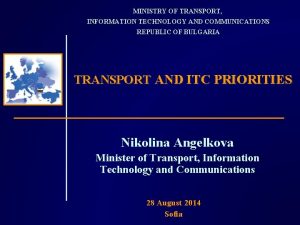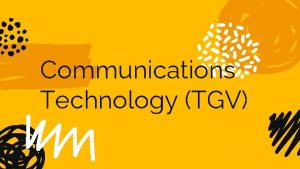Information Technology Institute Ministry of Communications and Information
















- Slides: 16

Information Technology Institute Ministry of Communications and Information Technology An Mostafa Mahmoud Ibrahim ITI, Software Engineering free_noble@yahoo. com ERP w e i v r e v O

�Definition. �ERP Legacy. �ERP’s elements and subsystems. �How can ERP system improve a business system? ! �What does drive ERP approach? ! �ERP implementation. �ERP vendors. �ERP pros & cons. �Summary.

�An ERP is a company-wide computer software system, and functions of a business from shared data stores. �An ERP system has a service-oriented architecture with MODULAR hardware and software units and "services" that communicate on a local area network. �Enterprise Resource Planning software, or ERP, doesn't live up to its acronym.

�The advent of E-Business and the need to leverage multiple sources of information within an enterprise. �Back-office enterprise software has its roots in the 1960 s and 1970 s. �MRP, short for Material Requirements Planning, was developed in the early 1960 s at IBM. � MRP II, the next generation of manufacturing software. �ERP, the enhancement of these before

An ERP system integrates: Database Applications Interfaces Tools Subsystems Logistics Bill Of of ERP Materials Sales & Marketing Master Schedulin M g aterials Requirement Planning Capacity Requirements Planning Purchasing Shop Floor Control Accounts Payable/Recei vable HR

�A single software program that serves the needs of people in finance along with human resources and in the warehouse. �Integrated software program that runs off a single database so that the various departments can more easily share information and communicate with each other. �No lounging (Imagine a customer order TRIP out of an ERP System). �Interconnectivity (for example, to get into the warehouse's computer system).

�Business � Customer Satisfaction. � Business Development - new areas, products, services. � Ability to face competition. � Efficient processes required to push the company to top gear. �IT � Present Software does not meet business needs. � Legacy systems difficult to maintain, Y 2 K Problem , Euro currency. � Obsolete hardware/software difficult to maintain.

�Producing ERP software systems are typically complex and usually impose significant changes on staff work practices. �It is desirable and highly advised to hire outside consultants who are professionally trained to implement these systems. �Three types of services that are provided by of an ERP vendor or of third-party consulting companies, these firms typically provide three areas of professional services: consulting, customization and support. �ERP systems are modular, so they don't all need be implemented at once. It can be divided into various stages, or phase-ins. �The length of time to implement an ERP system depends on the size of the business, the number of modules, the extent of customization, the scope of the change and the willingness of the customer to take ownership for the project.

�The typical project is about 14 months and requires around 150 consultants, a small project (e. g. , a company of less than 100 staff) may be planned and delivered within 3 -9 months; however, a large, multisite or multi-country implementation may take years. �Main success factor of an ERP implementation, Data Migration, which comes almost as the last phase implementation & requires. 1. 2. 3. 4. 5. Identifying the data to be migrated Determining the timing of data migration Generating the data templates Deciding on migration related setups Deciding on data archiving

�It is therefore crucial that organizations perform a thorough business process analysis before selecting an ERP vendor and setting off on the implementation track. �Neglecting to map current business processes prior to starting ERP implementation is a main reason for failure of ERP projects. �Configuring an ERP system is largely a matter of balancing the way you want the system to work with the way the system lets you work. �Configuration Tables – A configuration table enables a company to tailor a particular aspect of the system to the way it chooses to do business.

JBOPS

�ERP advantages: � INTEGRATION among different functional areas to ensure proper communication, productivity and efficiency. � Design engineering (how to best make the product). � Order tracking, from acceptance through fulfillment. � Tracking the three-way match between purchase orders (what was ordered), inventory receipts (what arrived), and costing (what the vendor invoiced). � Eliminates the problem of synchronizing changes between multiple systems. � Permits control of business processes that cross functional boundaries. � Provides top-down view of the enterprise (no "islands of information"). � Reduces the risk of loss of sensitive data by consolidating multiple permissions and security models into a single structure. � Some security features are included within an ERP system.

�ERP disadvantages: � Customization of the ERP software is limited. � Re-engineering of business processes to fit the "industry standard" prescribed by the ERP system may lead to a loss of competitive advantage. � ERP systems can be very expensive (This has led to a new category of "ERP light" solutions) � Many of the integrated links need high accuracy in other applications to work effectively. A company can achieve minimum standards, then over time "dirty data" will reduce the reliability of some applications. � The blurring of company boundaries can cause problems in accountability, lines of responsibility, and employee morale. � Resistance in sharing sensitive internal information between departments can reduce the effectiveness of the software. � The system may be too complex measured against the actual needs of the customers. � ERP Systems centralize the data in one place. This can increase the risk of loss of sensitive information in the event of a security breach.

�ERP, the business management modular system, mainly represents the INTEGRATION & the powerful dynamic internal COMMUNICATION. � ERP come to existence as a more mature IT management system gradually after other old mates. �ERP approach has been adopted to achieve customer dealing flexibility, internal management consistency & competitive ability. �Fortunately, being MODULAR is a main aspect of ERP implementation, however, the process still complex & requires unhurried decision. �Consultants & third-party staff are usually outsourced.


This powerpoint was kindly donated to www. worldofteaching. com http: //www. worldofteaching. com Is home to well over a thousand powerpoints submitted by teachers. This a free site. Please visit and I hope it will help in your teaching
 Ministry of electronics and information technology
Ministry of electronics and information technology Ministry of transport, communications and works
Ministry of transport, communications and works Sri lanka institute of information technology
Sri lanka institute of information technology Sri lanka institute of information technology affiliations
Sri lanka institute of information technology affiliations Precision fluency shaping program
Precision fluency shaping program What is information
What is information Vidhyadeep institute of engineering and technology
Vidhyadeep institute of engineering and technology Ulsan university of science and technology
Ulsan university of science and technology Masdar institute of science and technology
Masdar institute of science and technology Madhav institute of technology and science
Madhav institute of technology and science Elearning adveti
Elearning adveti Sagar institute of research and technology
Sagar institute of research and technology National institute of standards and technology
National institute of standards and technology Schorarly
Schorarly Bms institute of technology & management
Bms institute of technology & management Indian institute of space science and technology
Indian institute of space science and technology Shri dadaji institute of technology and science
Shri dadaji institute of technology and science





